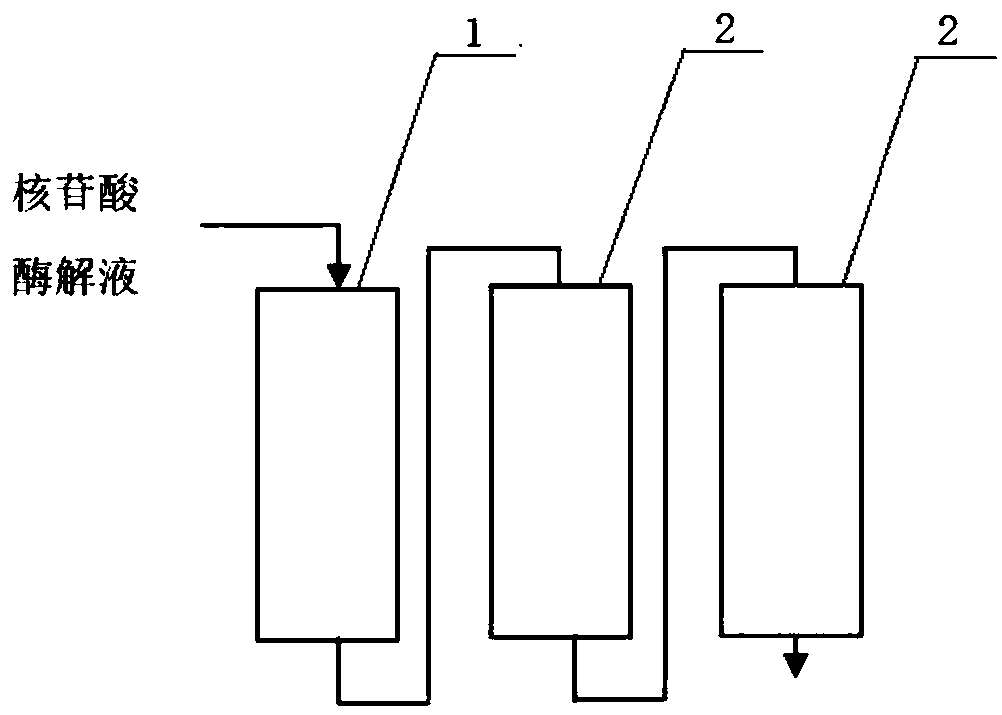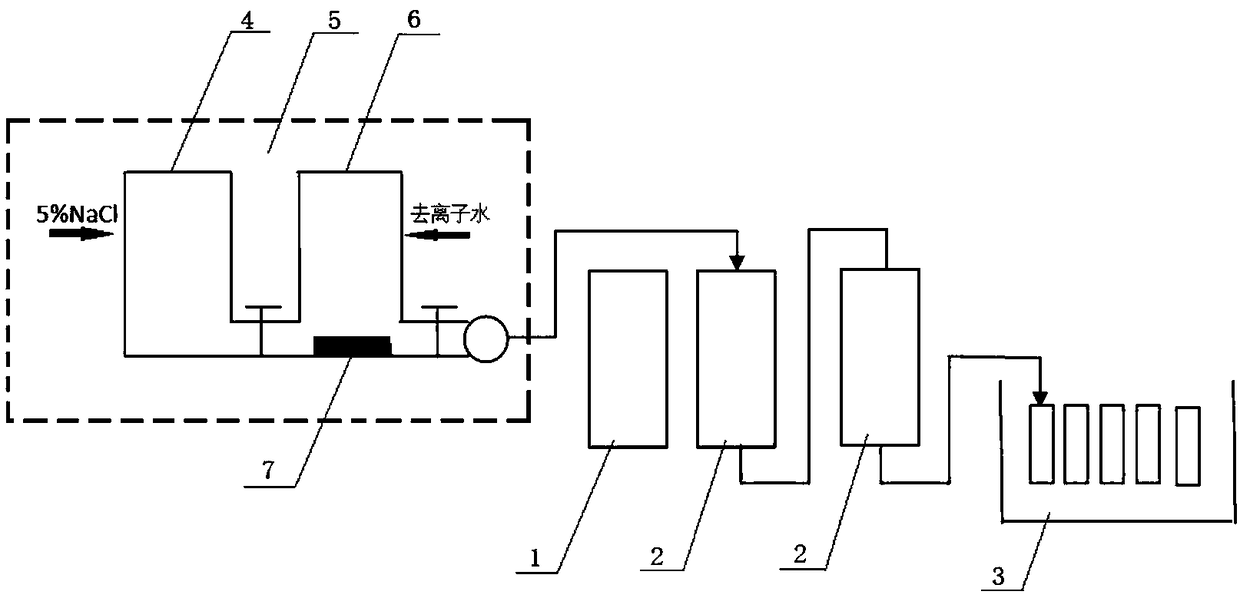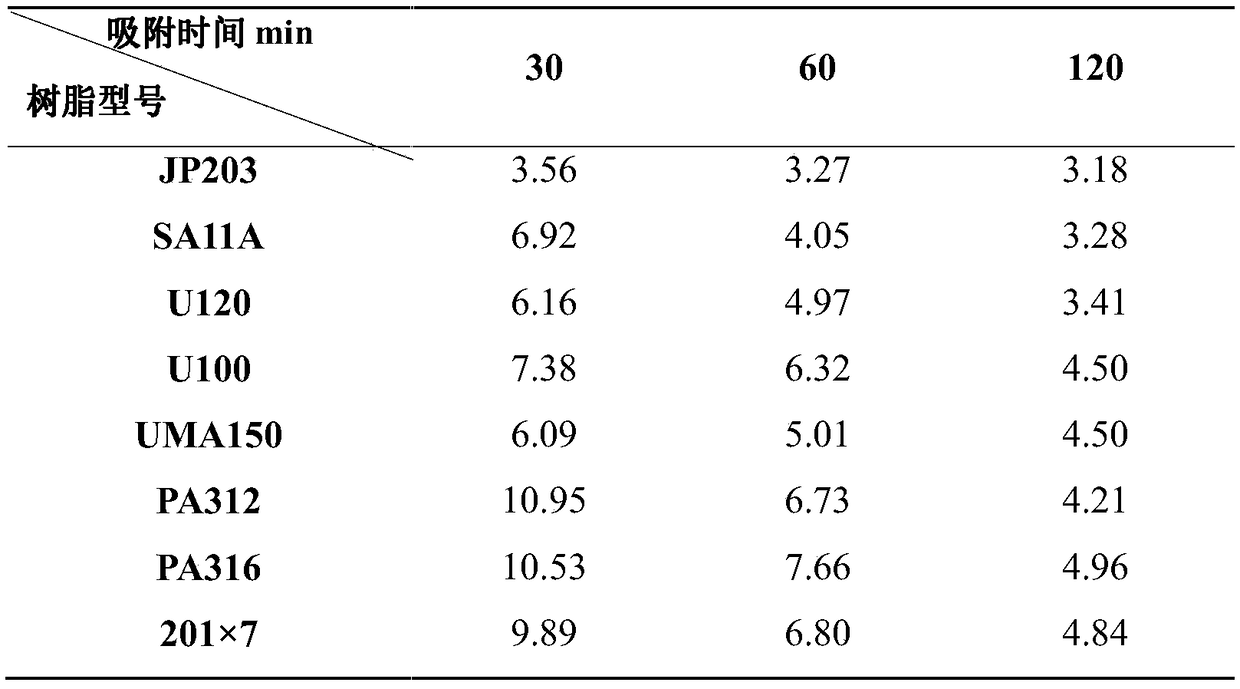Method for separating nucleotides through ion exchange resin composite chromatography
A technology of ion exchange resin and exchange resin, which is applied in the field of bioengineering, can solve problems such as comprehensive evaluation difficulties, and achieve the effects of strong nucleotide adsorption ability, good separation effect, and cost reduction
- Summary
- Abstract
- Description
- Claims
- Application Information
AI Technical Summary
Problems solved by technology
Method used
Image
Examples
Embodiment 1
[0021] a. Determination of resin adsorption efficiency
[0022] Ribonucleic acid (RNA) is obtained enzymatic solution 1500ml with nuclease P1 or phosphodiesterase by the method of document " enzyme preparation industry ", and its nucleotide concentration is 33g / L, and wherein CMP contains 6.387g / L, and AMP content 8.2605g / L, GMPNa 2 The content is 10.5285g / L, UMPNa 2 The content is 8.0835g / L.
[0023] Use the JP203, SA11A, U120, U100, UMA150, PA312 and PA316 resins provided by Mitsubishi Corporation of Japan, and test them together with the currently used 201×7 resin. Enzymolysis solution, its nucleotide concentration is 33g / L, measure the concentration (g / L) of nucleotide in the solution after being adsorbed by resin see table 1 below:
[0024] Table 1 The concentration of nucleotides in the solution after adsorption of various types of resins for 30, 60 and 120 minutes (g / L)
[0025]
[0026] It can be seen from the above table 1 that after the resin was added to the ...
PUM
 Login to View More
Login to View More Abstract
Description
Claims
Application Information
 Login to View More
Login to View More - R&D
- Intellectual Property
- Life Sciences
- Materials
- Tech Scout
- Unparalleled Data Quality
- Higher Quality Content
- 60% Fewer Hallucinations
Browse by: Latest US Patents, China's latest patents, Technical Efficacy Thesaurus, Application Domain, Technology Topic, Popular Technical Reports.
© 2025 PatSnap. All rights reserved.Legal|Privacy policy|Modern Slavery Act Transparency Statement|Sitemap|About US| Contact US: help@patsnap.com



